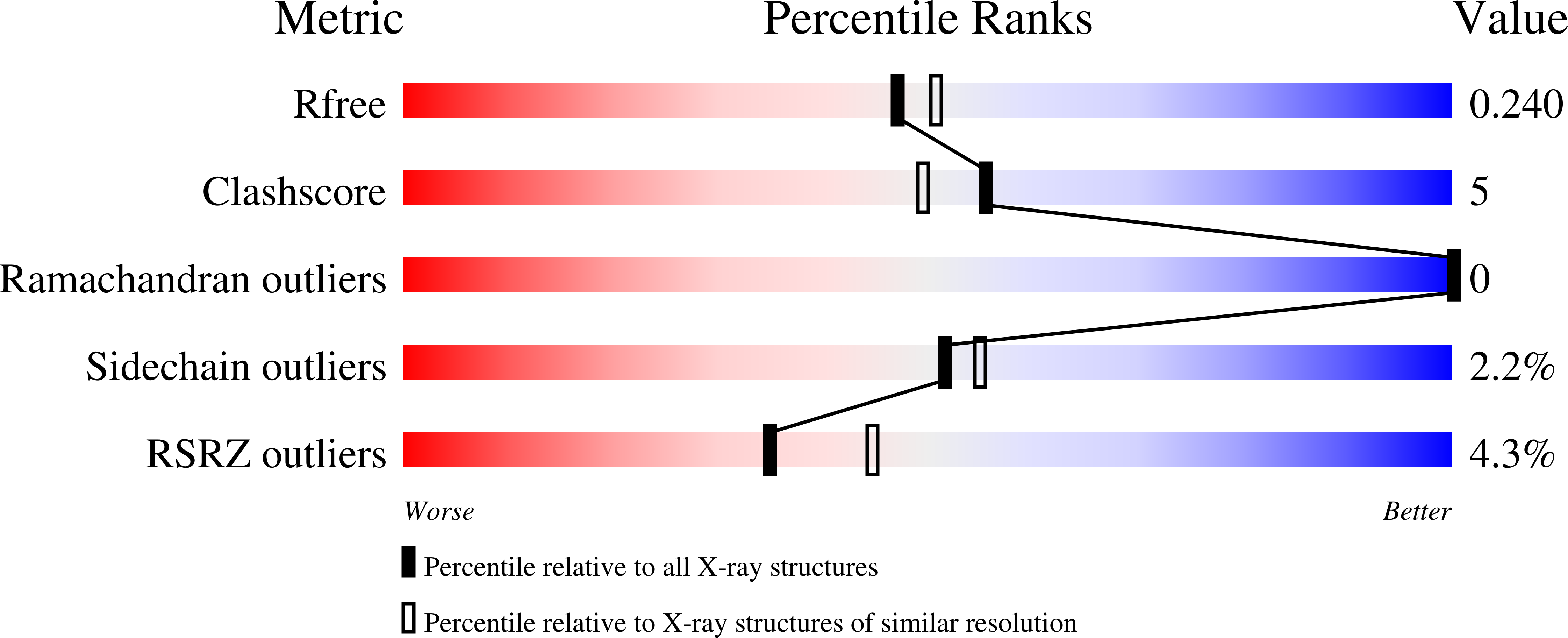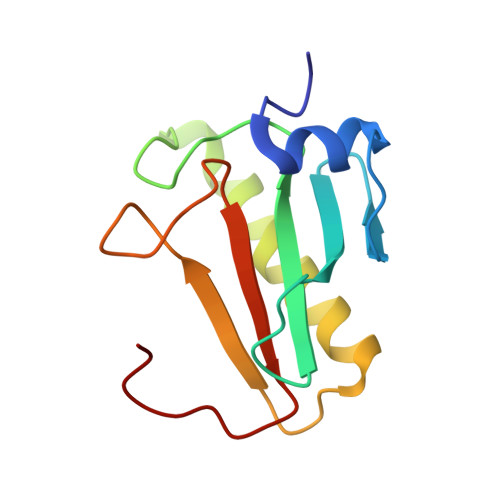Crystal structures of HINT demonstrate that histidine triad proteins are GalT-related nucleotide-binding proteins.
Brenner, C., Garrison, P., Gilmour, J., Peisach, D., Ringe, D., Petsko, G.A., Lowenstein, J.M.(1997) Nat Struct Biol 4: 231-238
- PubMed: 9164465
- DOI: https://doi.org/10.1038/nsb0397-231
- Primary Citation of Related Structures:
3RHN, 4RHN, 5RHN, 6RHN - PubMed Abstract:
Histidine triad nucleotide-binding protein (HINT), a dimeric purine nucleotide-binding protein from rabbit heart, is a member of the HIT (histidine triad) superfamily which includes HINT homologues and FHIT (HIT protein encoded at the chromosome 3 fragile site) homologues. Crystal structures of HINT-nucleotide complexes demonstrate that the most conserved residues in the superfamily mediate nucleotide binding and that the HIT motif forms part of the phosphate binding loop. Galactose-1-phosphate uridylyltransferase, whose deficiency causes galactosemia, contains tandem HINT domains with the same fold and mode of nucleotide binding as HINT despite having no overall sequence similarity. Features of FHIT, a diadenosine polyphosphate hydrolase and candidate tumour suppressor, are predicted from HINT-nucleotide structures.
Organizational Affiliation:
Department of Biochemistry, Brandeis University, Waltham, Massachusetts 02254, USA. brenner@dada.jci.tju.edu














